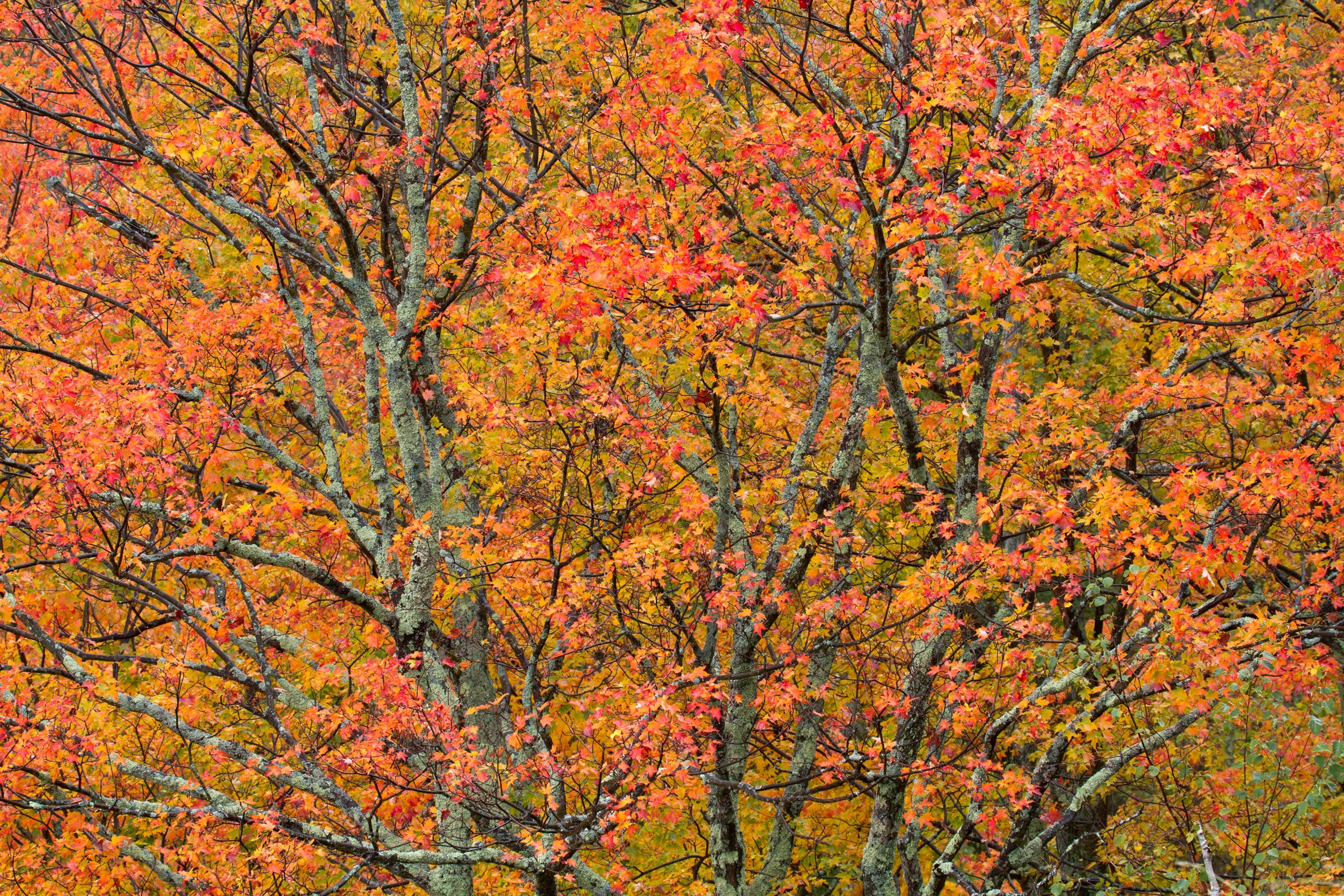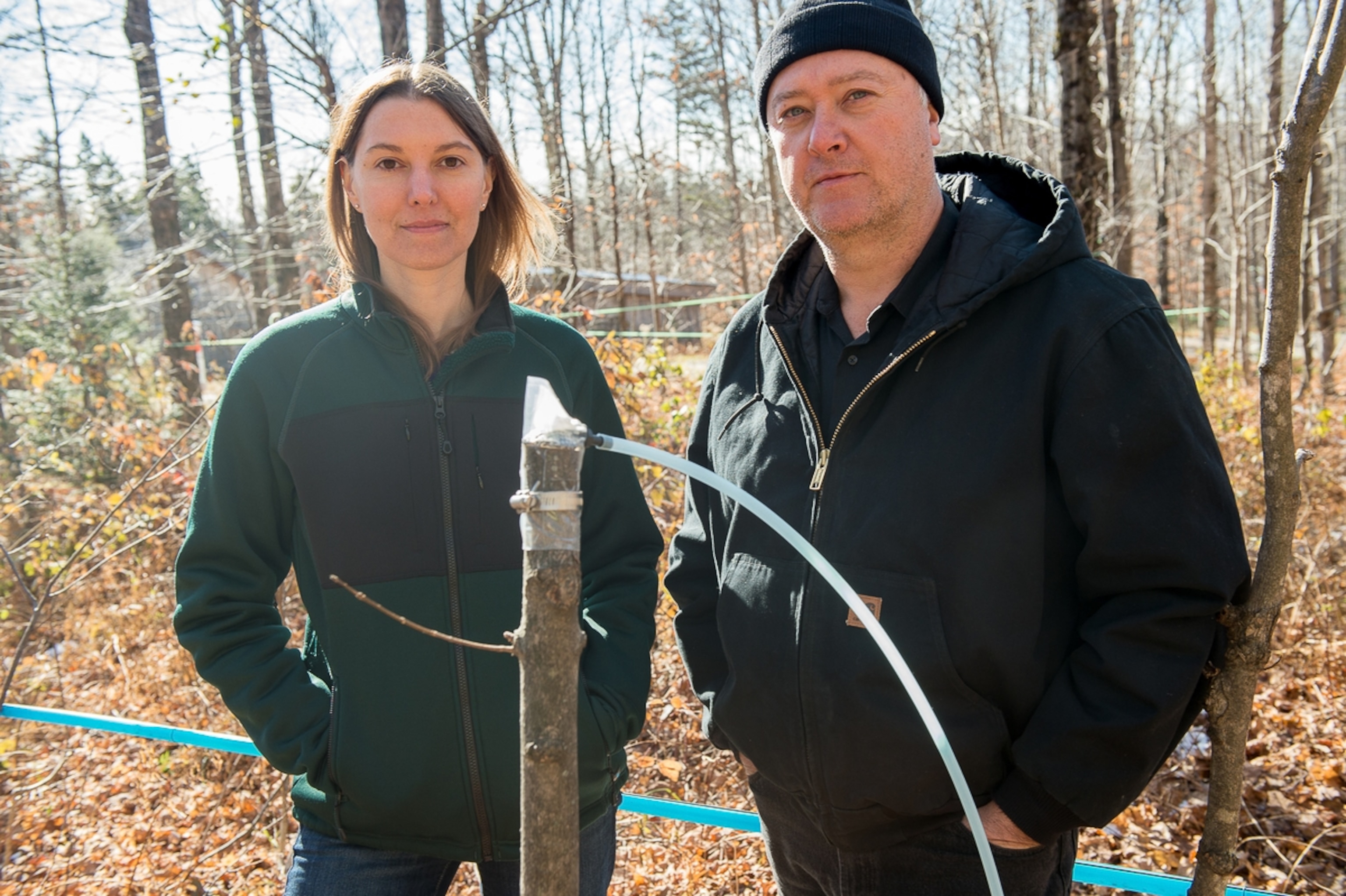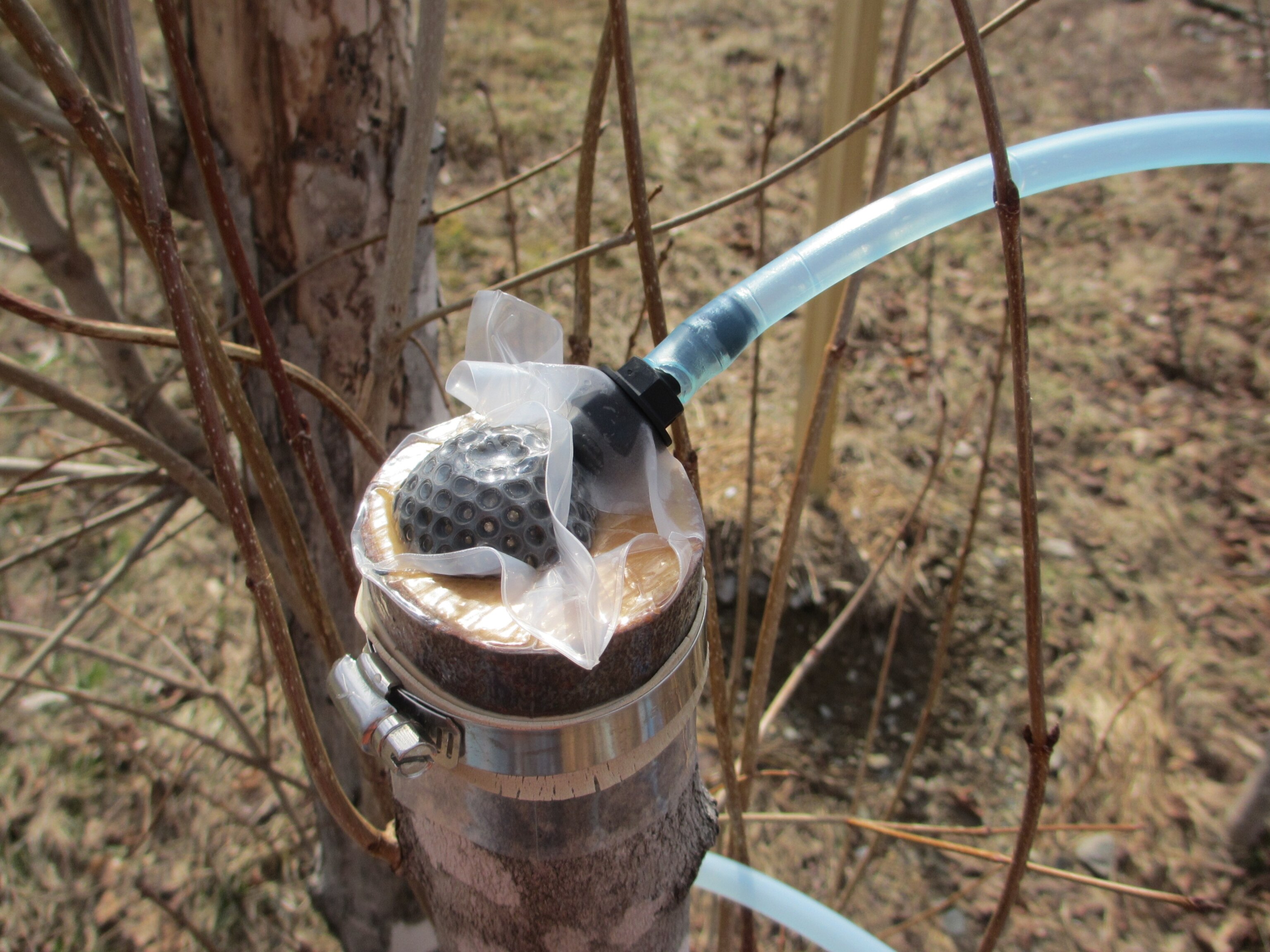
Global Warming Pushes Maple Trees, Syrup to the Brink
The polar bear is a powerful symbol of the effects of climate change in the Arctic. Here in New England, our symbol may soon be the sugar maple tree. Tapped for syrup for centuries and famous for its fall foliage, the sugar maple is stressed to the point of decline and many scientists studying this beloved tree believe rising temperatures are the cause.
Maple syrup’s use as a food was first recorded in the early 1600s, when French writer Marc Lescarbot noted that Native American tribes “get juice from the trees and distill it down into a very sweet and agreeable liquid.” The syrup lore goes like this: A chief threw a tomahawk at a tree and noticed the rich syrup dripping from it. His wife cooked that evening’s venison in the sweet syrup, and the rest is history.
But what is a uniquely North American product is also an exceptionally picky one, dependent on a narrow and highly specialized climate of freezing nights and mild days. In the 1950s and 60s, eighty percent of the world’s maple syrup came from the U.S., 20 percent from Canada. Today it’s the opposite.
And it’s less sweet. “Just fifty years ago a sugar maple’s sap was four percent sugar, now it’s two,” says Barry Rock, a leading forest scientist and Professor of Natural Resources at the University of New Hampshire who has studied sugar maples for over 25 years. Rock says there is a “direct correlation” between sweetness reduction and temperature rise since 1970. “Because of the lower sugar content, more sap is needed to bring the maple syrup to its required 66.9 percent sugar content in the finished product. So while it used to take 25 gallons of sap to make a gallon of pure maple syrup, it now takes 50,” he says.

Sugar maples begin making sugar as soon as the weather goes above freezing. That sugar is a powerful source for wood production and bud growth, as well as keeping the tree healthy and protecting it from insects, disease and drought. But, when the weather gets too hot, this delicate photosynthesis machine gets fried and shuts down. During uncommonly hot summers, springs or falls, scientists have seen this internal sugar making process reduced by nearly 40 percent.
Of course, the sugar maples are responsible for more than syrup.
“This iconic, New England species not only gives us sweet syrup but also defines our fall foliage,” says Rock, who is managing a satellite-monitoring project that measures fall colors from space. He says that data since 1972 already shows a “decided shift” away from the brilliant reds and oranges typical of sugar maples. Stressed sugar maples with reduced sugar content in their sap have less protective fuel to plow back into the tree as they prepare for winter. Bright colors indicate the sugar maple is doing its work of returning the nutrients in the leaves back to the body of the tree. “Warmer weather has created numerous stresses on the sugar maple, and reduced its chlorophyll, and its sap sugar content, so we are seeing more yellows and browns,” explains Rock.
“This is a different place without the sugar maple,” says Rock who adds that the trees are not necessarily dying but showing mass signs of distress.
National Oceanic and Atmospheric Administration data show temperatures in the Northeastern U.S. have increased as much as 2.8 degrees since 1971 and are still rising. That means New England may have the climate of North Carolina by 2100. The maple syrup industry, if it still exists then, could be operating only in Canada.
But there may be hope yet.
Tim Perkins, a Professor of Plant Biology at the University of Vermont’s Proctor Maple Research Center focuses on adaptation—how to help U.S. syrup producers make more with less.
He is quick to point out that technological improvements have offset much of the losses affecting American sugar maples to date. “… [W]ith better vacuum, evaporation, and sanitation, tappers get more from trees than they did 20 years ago—even with those trees stressed from warmer weather.”

Perkins hopes to be part of the solution with “plantation” tapping: In 1999, Perkins and fellow researcher Abby van den Berg cut off the top of a sugar maple to study sap flow and in the process discovered a novel way to make syrup.
“We can make syrup even after mature maples no longer thrive by replacing 100-year-old trees with 7 to 12-year-olds planted close together,” he says. “Instead of extracting sap from a hole in the side of the tree, we cut off the top and draw the syrup straight out from there.” Such a decapitation would kill mature sugar maples, but not young onesnot young onesnot young ones. “Six years of success proves that plantation tapping can produce comparable syrup from trees that can withstand warmer temperatures and the taste is unaffected,” Perkins says
There are other tree champions. Martha Carlson is a veteran New Hampshire syrup farmer so concerned about the health of the sugar maple that she went back to school to get her doctorate on the topic. In the process she spearheaded Forest Watch, a program that enlists students to learn about the sugar maple and document the health of New Hampshire’s “sugar bushes”—the local term for stands of sugar maples.
Carlson stresses the resiliency of the tree. “Sugar maples live for 300 to 400 years, making sugar and storing atmospheric carbon in their wood. When a tree dies, it happens very slowly. We are not talking about these trees dying suddenly. I suspect they may still be here, even when it’s much hotter, though they may not run enough sap for a sugaring industry.”
Rock hopes the 2015 climate negotiations in Paris, COP21, can lead the way to real progress (for more on climate change, see the November issue of National Geographic.) “It’s not too late to rescue our sugar maples.”
Sarah Brown is a writer who has worked for CNN New York, NBC Moscow, and APTV Moscow. She founded the Green Alliance in 2009, an organization that works with business and consumers on sustainability She can be reached at sarah@greenalliance.biz.








